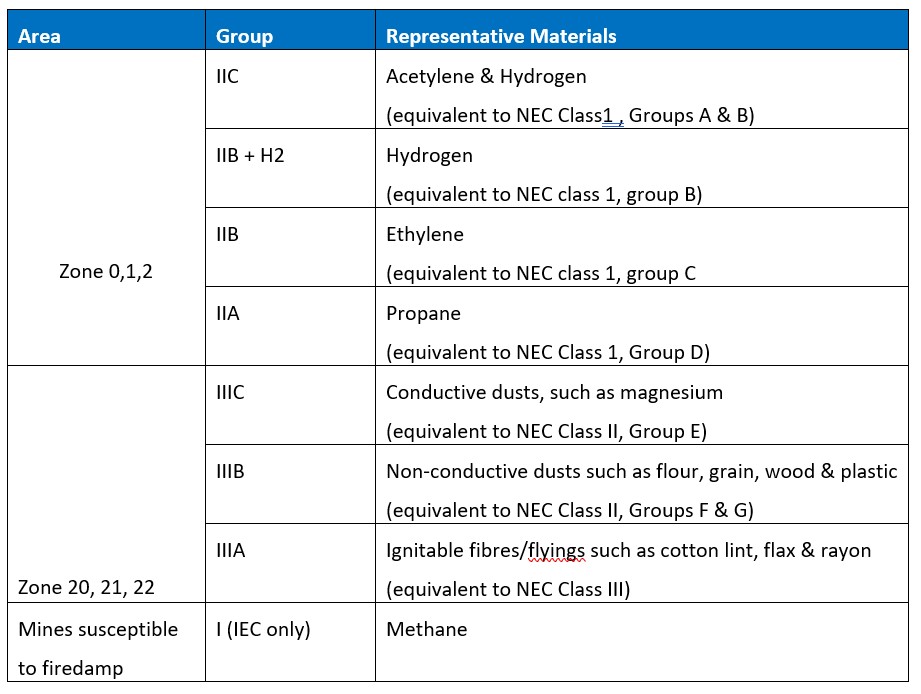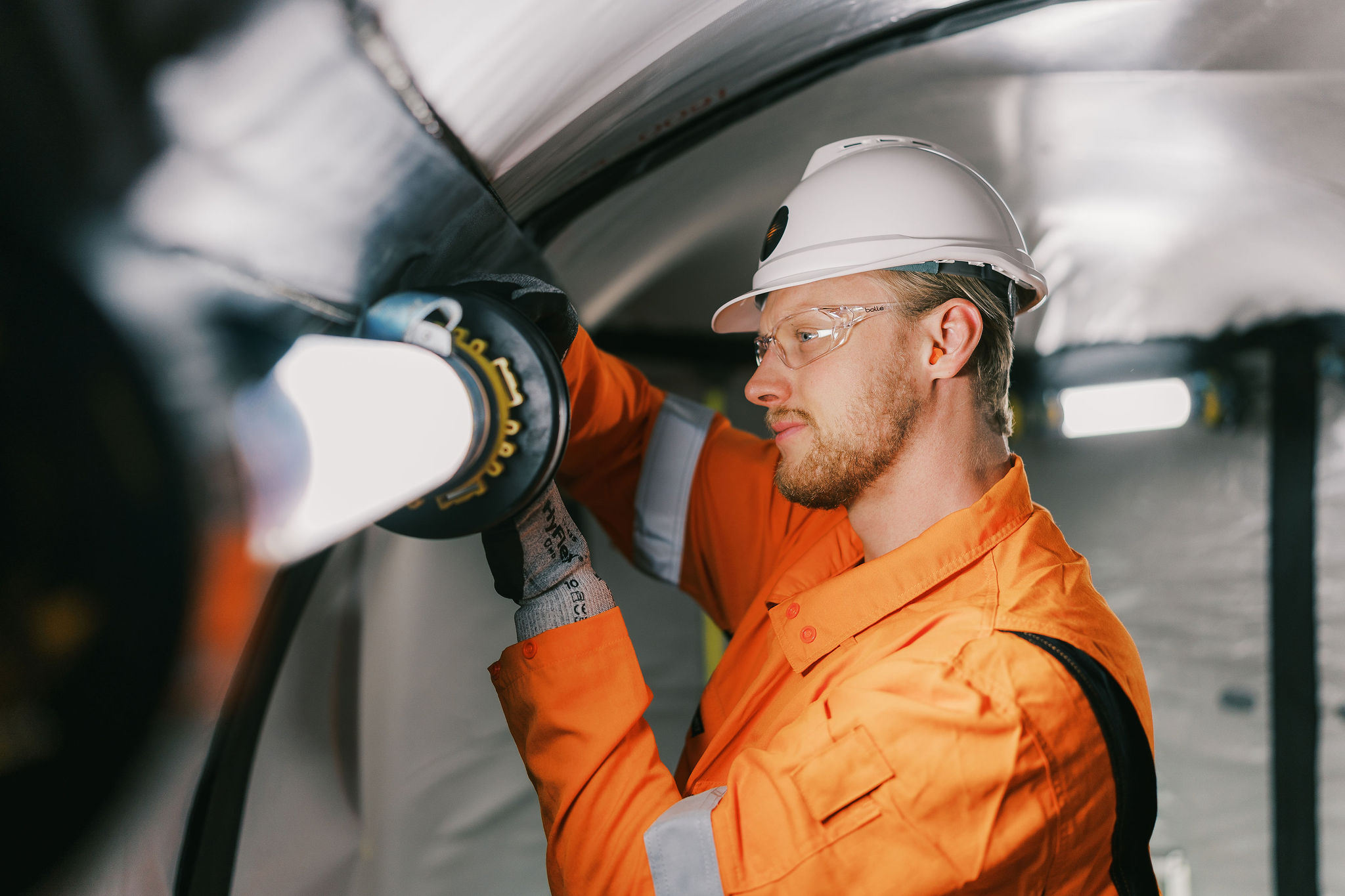See This Report about Roar Solutions
See This Report about Roar Solutions
Blog Article
Roar Solutions Can Be Fun For Anyone
Table of ContentsThe Ultimate Guide To Roar SolutionsThe Basic Principles Of Roar Solutions How Roar Solutions can Save You Time, Stress, and Money.
In such an atmosphere a fire or surge is feasible when 3 standard conditions are satisfied. This is frequently referred to as the "harmful area" or "burning" triangular. In order to protect installations from a possible surge a technique of analysing and classifying a possibly harmful location is needed. The purpose of this is to make sure the right selection and installment of devices to ultimately prevent a surge and to guarantee safety of life.
(https://my.omsystem.com/members/roarsolutions)
No tools should be installed where the surface temperature level of the equipment is more than the ignition temperature of the given risk. Below are some common dust dangerous and their minimum ignition temperature level. Coal Dust 380C 225C Polythene 420C (thaws) Methyl Cellulose 420C 320C Starch 460C 435C Flour 490C 340C Sugar 490C 460C Grain Dirt 510C 300C Phenolic Material 530C > 450C Aluminium 590C > 450C PVC 700C > 450C Soot 810C 570C The probability of the danger being present in a concentration high enough to create an ignition will certainly differ from place to location.
In order to categorize this threat an installment is divided into areas of danger relying on the amount of time the dangerous exists. These areas are described as Zones. For gases and vapours and dirts and fibres there are three zones. Zone 0 Area 20 An unsafe ambience is highly most likely to be present and may be present for extended periods of time (> 1000 hours annually) and even continuously Area 1 Area 21 A dangerous ambience is possible yet unlikely to be present for extended periods of time (> 10 450 C [842 F] A classification of T6 means the minimum ignition temperature level is > 85 C [185 F] Hazardous location electric equipment maybe created for use in higher ambient temperature levels. This would showed on the score plate e.g. EExe II C T3 Ta + 60C( This suggests at 60C ambient T3 will not be exceeded) T1 T1, T2, T3, T4, T5, T6 T2 T2, T3, T4, T5, T6 T3 T3, T4, T5, T6 T4 T4, T5, T6 T5 T5, T6 T6 T6 A T Course ranking of T1 indicates the optimum surface temperature level produced by the instrument at 40 C is 450 C. Presuming the connected T Course and Temperature level ranking for the equipment are ideal for the area, you can constantly make use of a tool with an extra stringent Division ranking than required for the location. There isn't a clear answer to this question. It actually does depend upon the type of devices and what repair services require to be executed. Tools with specific examination procedures that can not be done in the area in order to achieve/maintain 3rd celebration score. Must return to the manufacturing facility if it is prior to the devices's solution. Area Fixing By Authorised Worker: Complex screening may not be needed nevertheless details procedures might require to be adhered to in order for the tools to keep its 3rd party ranking. Authorised workers need to be used to do the job properly Repair must be a like for like substitute. New component should be taken into consideration as a direct replacement needing no special screening of the tools after the repair work is complete. Each item of tools with an unsafe score should be examined individually. These are outlined at a high degree listed below, however, for even more thorough details, please refer directly to the standards.
Roar Solutions - Truths
The equipment register is a detailed data source of equipment documents that includes a minimum set of fields to recognize each product's place, technical specifications, Ex category, age, and environmental data. This info is crucial for monitoring and handling the equipment properly within hazardous areas. In contrast, for regular or RBI sampling assessments, the quality will certainly be a combination of Thorough and Close examinations. The proportion of Detailed to Close evaluations will certainly be figured out by the Equipment Threat, which is assessed based upon ignition threat (the likelihood of a resource of ignition versus the probability of a flammable atmosphere )and the hazardous area category
( Zone 0, 1, or 2). This variation will additionally influence the resourcing demands for job preparation. When Whole lots are specified, you can create tasting strategies based upon the example dimension of each Whole lot, which describes the variety of arbitrary tools things to be evaluated. To determine the required sample dimension, two aspects need to be examined: the dimension of the Great deal and the classification of evaluation, which shows the level of effort that should be used( minimized, typical, or raised )to the examination of the Lot. By integrating the category of evaluation with the Lot size, you can after that develop the appropriate rejection requirements for an example, indicating the permitted variety of malfunctioning items located within that sample. For even more information on this process, please describe the Power Institute Standards. The IEC 60079 standard suggests that the optimum interval between evaluations need to not exceed 3 years. EEHA assessments will certainly also be conducted beyond RBI campaigns as component of scheduled maintenance and tools overhauls or repair services. These assessments can be credited toward the RBI example dimensions within the affected Lots. EEHA examinations are carried out to determine faults in electric equipment. A heavy racking up system is important, as a single tool may have multiple mistakes, each with varying levels of ignition threat. If the consolidated score of both examinations is much less than two times the fault rating, the Lot is regarded acceptable. If the Whole lot is still thought about inappropriate, it should undertake a full assessment or justification, which might trigger stricter inspection procedures. Accepted Lot: The sources of any type of faults are determined. If a typical failure mode is discovered, extra tools may call for maintenance. Mistakes are identified by seriousness( Safety and security, Honesty, Home cleaning ), guaranteeing that immediate problems are analyzed and addressed immediately to mitigate any kind of effect on safety or procedures. The EEHA database ought to track and videotape the lifecycle of faults together with the rehabilitative activities taken. Carrying out a durable Risk-Based Inspection( RBI )approach is critical for ensuring conformity and safety in handling Electrical Devices in Hazardous Locations( EEHA) (eeha training). Automated Mistake Rating and Lifecycle Monitoring: Easily manage faults and track their lifecycle to improve examination accuracy. The introduction of this support for risk-based evaluation further strengthens Inspectivity's setting as a best-in-class service for governing compliance, as well as for any kind of asset-centric inspection use case. If you are interested in discovering more, we invite you to request a demonstration and discover how our option can change your EEHA administration processes.
Things about Roar Solutions

In regards to explosive risk, a harmful area is an environment in which an explosive environment is existing (or may be expected to be present) in quantities that call for unique preventative measures for the building and construction, setup and use tools. eeha courses. In this write-up we check out the difficulties dealt with in the workplace, the risk control measures, and the called for proficiencies to function safely
These materials can, in particular conditions, form explosive environments and these can have significant and awful effects. Many of us are familiar with the fire triangle remove any kind of one of the three aspects and the fire can not happen, yet what does this mean in the context of dangerous areas?
In most circumstances, we can do little concerning the degrees of oxygen in the air, but we can have substantial impact on sources of ignition, for instance electric devices. Harmful locations are recorded on the unsafe location classification illustration and are identified on-site by the triangular "EX" indication. Right here, amongst other crucial details, zones are split into 3 types relying on the risk, the chance and period that an eruptive ambience will certainly exist; Area 0 or 20 is considered the most hazardous and Zone 2 or 22 is considered the least.
Report this page